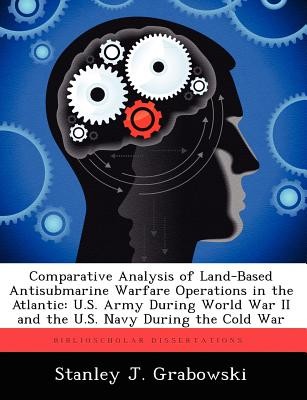
- We will send in 10–14 business days.
- Author: Stanley J Grabowski
- Publisher: BiblioScholar
- ISBN-10: 1249364582
- ISBN-13: 9781249364580
- Format: 18.9 x 24.6 x 0.6 cm, softcover
- Language: English
- SAVE -10% with code: EXTRA
Comparative Analysis of Land-Based Antisubmarine Warfare Operations in the Atlantic (e-book) (used book) | bookbook.eu
Reviews
Description
This study examines a comparison of land based antisubmarine warfare (ASW) operations using U.S. Army aircraft during World War 2 and the U.S. Navy's P-3 Orion during the Cold War. Through both wars, land based ASW aircraft provided the U.S. military an outreaching arm that limited the striking potential of enemy submarines. This thesis investigates the comparison in more depth by using four of the nine principles of war: (1) objective, (2) offensive, (3) maneuver, and (4) surprise. Deterrence was the national strategy used to keep submarines from becoming a potential aggressor during both wars. The Navy's P-3 Orion, land based throughout the Atlantic, was able to provide a credible deterrent against Soviet submarines since its introduction to the fleet in 1962. U.S. Army aircraft of World War 2 used in fighting the German U-boats, on the other hand, progressed into a credible deterrent in their temporary role of ASW. The author examines the short lived history of U.S. Army land based operations (approximately two years) and the extended history of the U.S. Navy land based operations and suggests that despite technological advances onboard both service's aircraft, land based ASW has changed very little after fifty years. This study also indicates that there lies a significant need in pursuing and continuing the capabilities of a land based ASW aircraft.
EXTRA 10 % discount with code: EXTRA
The promotion ends in 17d.05:27:38
The discount code is valid when purchasing from 10 €. Discounts do not stack.
- Author: Stanley J Grabowski
- Publisher: BiblioScholar
- ISBN-10: 1249364582
- ISBN-13: 9781249364580
- Format: 18.9 x 24.6 x 0.6 cm, softcover
- Language: English English
This study examines a comparison of land based antisubmarine warfare (ASW) operations using U.S. Army aircraft during World War 2 and the U.S. Navy's P-3 Orion during the Cold War. Through both wars, land based ASW aircraft provided the U.S. military an outreaching arm that limited the striking potential of enemy submarines. This thesis investigates the comparison in more depth by using four of the nine principles of war: (1) objective, (2) offensive, (3) maneuver, and (4) surprise. Deterrence was the national strategy used to keep submarines from becoming a potential aggressor during both wars. The Navy's P-3 Orion, land based throughout the Atlantic, was able to provide a credible deterrent against Soviet submarines since its introduction to the fleet in 1962. U.S. Army aircraft of World War 2 used in fighting the German U-boats, on the other hand, progressed into a credible deterrent in their temporary role of ASW. The author examines the short lived history of U.S. Army land based operations (approximately two years) and the extended history of the U.S. Navy land based operations and suggests that despite technological advances onboard both service's aircraft, land based ASW has changed very little after fifty years. This study also indicates that there lies a significant need in pursuing and continuing the capabilities of a land based ASW aircraft.


Reviews